What’s the Difference Between a Fluke and a Flounder?
Fluke and flounder sound like the same thing, but they’re not. They are different types of fish, and knowing the difference matters if you like fishing or cooking.
Flounder is the name for a big group of flatfish. This group includes several kinds of fish, like winter flounder and summer flounder. The summer flounder is also called fluke. You can find fluke mostly along the Atlantic coast of the U.S. People love fluke for its great taste and how easy it is to cook in lots of ways.
One easy way to tell a fluke apart from other flounders is by its eyes. Both of its eyes sit on the left side of its body. This cool feature helps you spot a fluke right away. Fluke also grow bigger and act more aggressively than other flounders, which changes how they live and how people fish for them.
When it comes to cooking, fluke tastes mild and sweet. It has tender white meat that works great in dishes like sushi or pan-fried fish. Other flounders taste different — they have firmer meat and their own unique flavors, giving cooks more variety to work with.
If you know how fluke and other flounders are different, you’ll fish more responsibly and cook them better. This guide will help you learn what makes each fish special — from their looks to their habitats to how they taste on your plate.
Characteristic Differences
| Characteristic | Fluke (Summer Flounder) | Other Flounders (e.g. Winter Flounder, Yellowtail Flounder) |
|---|---|---|
| Scientific Name | Paralichthys dentatus | Various species (e.g. Pseudopleuronectes americanus) |
| Common Name | Fluke (Summer Flounder) | Flounder (general term for many flatfish species) |
| Body Shape | Flat, oval body | Flat, more rounded or oval depending on species |
| Eye Placement | Both eyes on the left side of body | Most have both eyes on the right side of body |
| Skin Color (Top Side) | Brown/gray with spots (can change color to blend) | Generally dark brown or muddy color with small spots or plain |
| Underside Color | White | White |
| Size (Common) | 15–25 inches (can grow larger) | Smaller, often 12–18 inches (depends on species) |
| Weight (Common) | 3–6 lbs (large ones can reach 15 lbs) | 1–3 lbs (varies by species) |
| Habitat | Atlantic coast, sandy bottoms, estuaries, nearshore | North Atlantic and coastal waters, often cooler areas |
| Behavior | Aggressive predator, ambushes prey | More passive, slower predator |
| Diet | Fish, squid, shrimp, crabs | Small fish, worms, crustaceans |
| Seasonal Availability | Peak in summer and early fall | More available in cooler months (winter flounder peaks in winter) |
| Fishing Method | Bottom fishing, jigging, trolling | Bottom fishing |
| Culinary Use | Delicate, mild, sweet flavor; good raw (sushi), sautéed, baked | Firmer texture; good baked, fried, broiled |
| Meat Color | White | White |
| Popularity in Cooking | High—used in sushi, fine dining, versatile | Moderate—traditional dishes, home cooking |
| Sustainability | Generally well-managed, seasonal limits apply | Varies by species; some under pressure, check local guidelines |
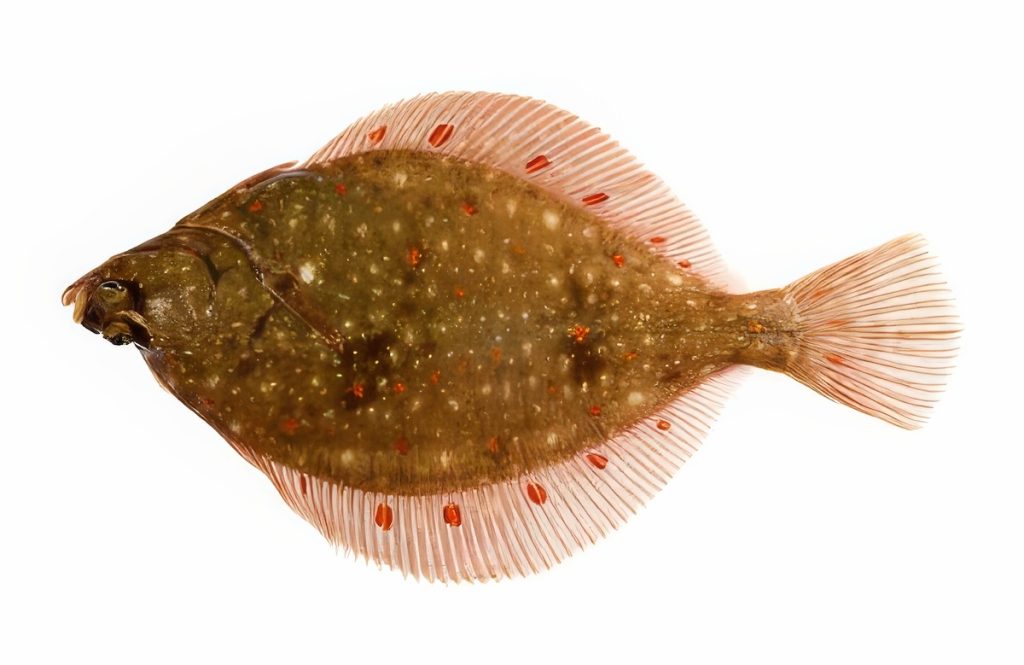
Early Life
Flukes and flounders are types of flatfish. That means that, while they started life swimming upright, they lay on either their left or right side during the larval stage, and the eye facing towards the bottom migrated to be top-facing.
So, some flat fish are right-side-up (their left eye migrated to the right side), and some are left-side-up, meaning their right eye migrated to the left side. What makes a particular fish turn into a left-side or a right-side fish?
And what makes a “normal” fish evolve into a flat fish? I have no idea about the former, but I’m sure the latter adaptation was for camouflage while hunting for food.
The top side of flatfish is mottled and dark, making them blend in well on the ocean bottoms. As they are bottom dwellers, this is a very good thing as they can surprise their unsuspecting prey.
All Fluke Are Flounder, but Not All Flounder Are Fluke
Generally speaking, left-side-up flounders are flukes and right-side-up flounders are called flounders. That sounds easy enough to remember, but it gets worse. Flukes are also called “summer flounder,” and flounder, or right-side fish, are called “winter flounder.”
It also turns out that of the 500 plus flatfish species, five are all called flounder. It’s good to know there is a difference, but I would be hard-pressed to taste the difference between a fluke and a flounder.
Four of the five flounder species are found in the Atlantic: summer flounder (left-side-up flukes), winter flounder, southern flounder, and European flounder. The fifth, the Japanese flounder, is found in the Pacific Ocean.
Unless you are studying fish biology, and I’m certainly not, I think the main thing to remember is that all flukes are flounders, but not all flounders are flukes. And all flounders are tasty.
Fluke & Flounder Fun Facts
I did find out some fun facts about flounder and fluke, though, no matter what name you call them.
Large flounder and fluke (8–10 pounds or more) are often called “doormats” or “snow shoes” because of how flat and wide they are.
The names “summer flounder” (fluke) and “winter flounder” match their seasonal patterns:
Summer flounder spend winters offshore and come into bays during summer.
Winter flounder enter bays in the fall and stay through winter until spring.
Fluke and winter flounder usually don’t hang out together. One possible reason: fluke have teeth, and winter flounder do not (but that’s just a guess).
The name “fluke” might come from an old German word, flah, meaning “flat.”
The word “flounder” comes from the Dutch word flodderen, meaning “to flop about.”
All fish flop when caught, but flounders are especially good at flopping around on the ocean floor, kicking up sand to hide—similar to rays.
Because flounders swim sideways, it often looks like they have trouble steering.
It’s still a bit funny that “fluke” can also mean a freak event—odd for a fish whose eyes move to one side of its head!
No matter how they look or swim, flounder is tasty when cooked. Here’s a recipe for broiled flounder in lemon butter, and be sure to check out Pan-Fried Flounder with Potatoes and Parsley. This is how my mom prepared fresh flounder for us as kids.
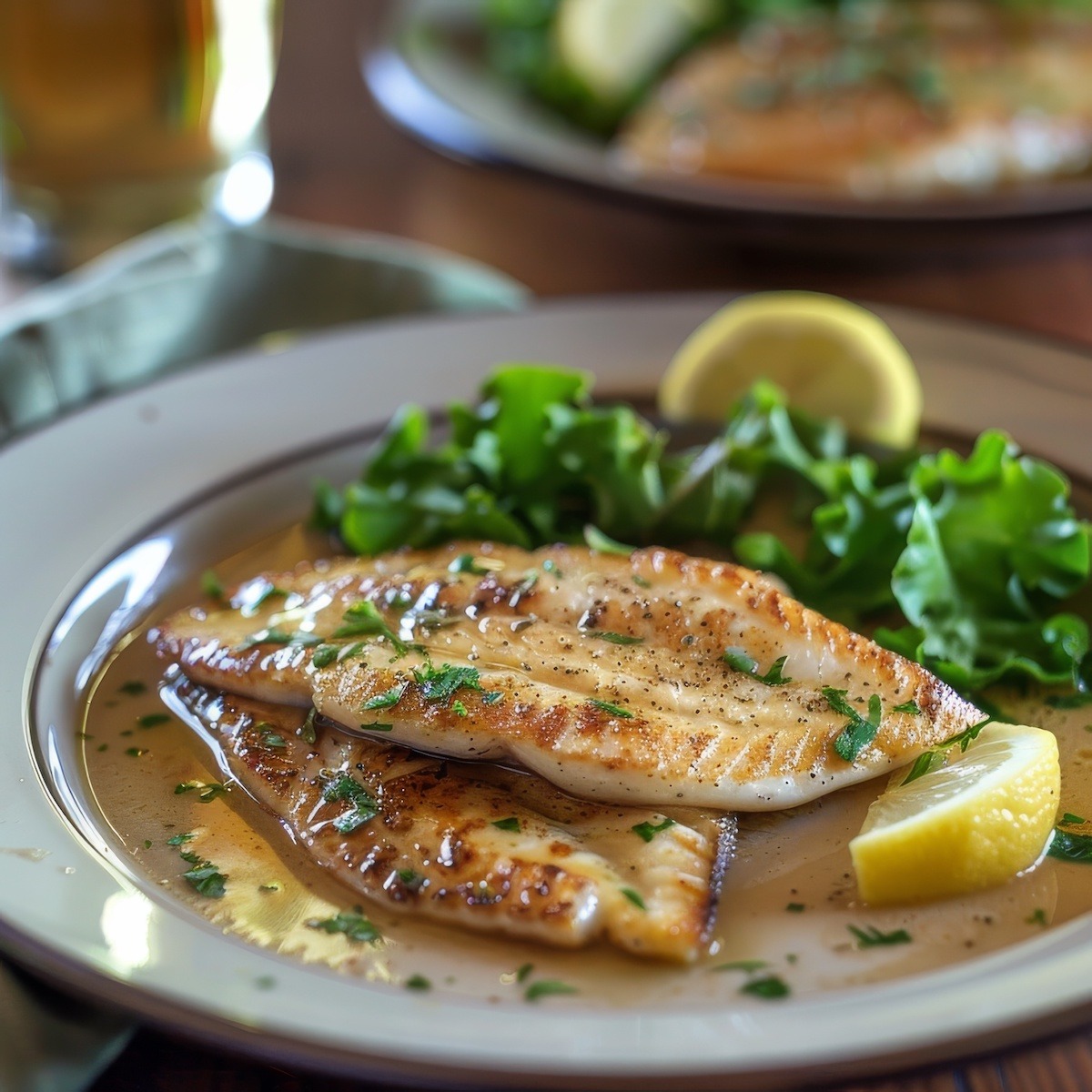
Broiled Flounder in Lemon Butter
Ingredients
- For the fish
- 4 flounder fillets
- 2 tablespoons melted butter
- 2 tablespoons freshly squeezed lemon juice
- kosher salt and freshly ground white pepper to taste
For serving
- 1 lemon very thinly sliced
- fresh Italian or curly parsley, minced
Instructions
- Rinse and pat dry the fillets. Arrange in on a baking tray.
- Combine the melted butter and lemon juice and drizzle evenly over the fish, reserving about 1 tablespoon.
- Lightly sprinkle with salt and pepper.
- Broil the fish on the highest rack until the fish is white and is just starting to flake, about 5-7 minutes.
- To serve, drizzle on the last tablespoon of lemon butter. Arrange lemon slices on each fillet and sprinkle with the freshly chopped herbs.

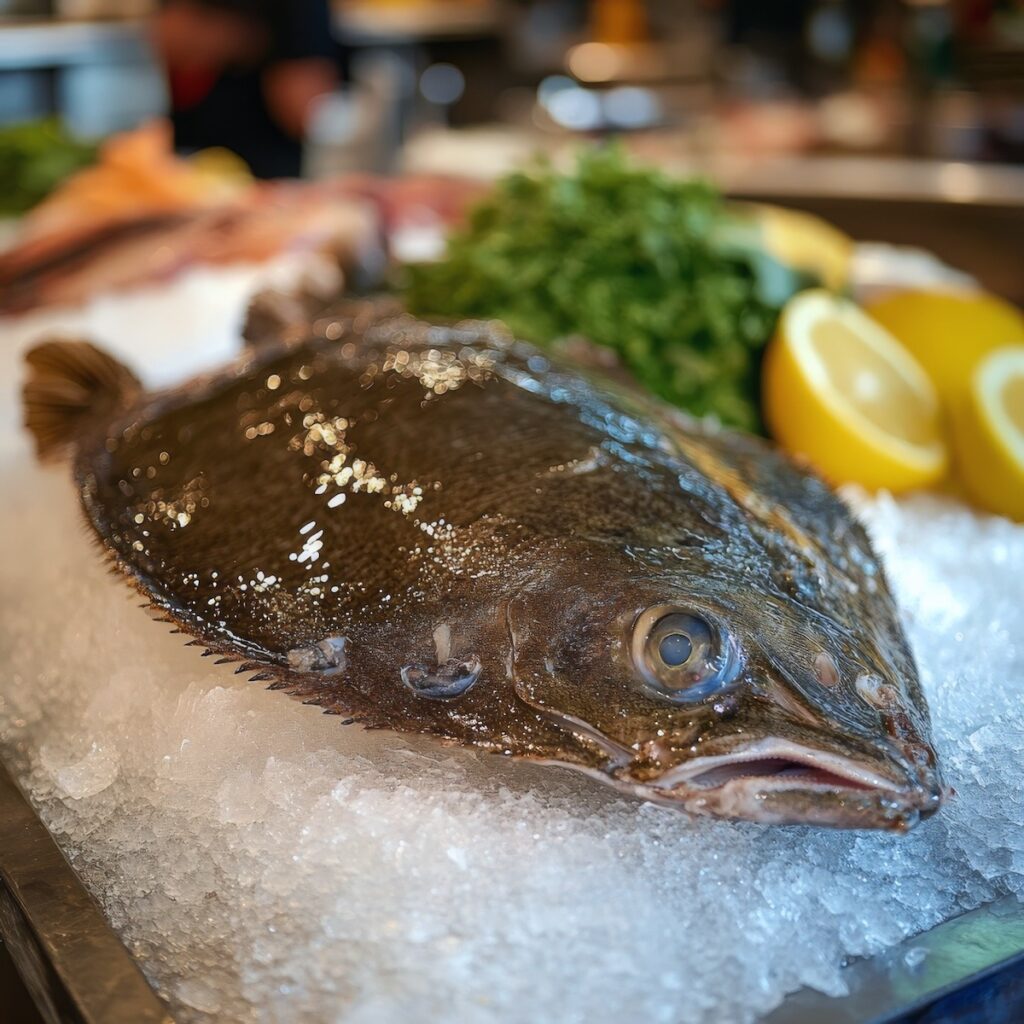
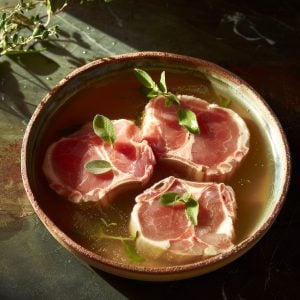
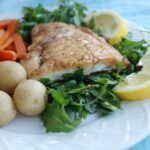
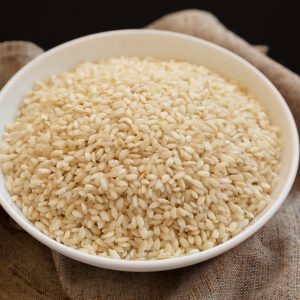
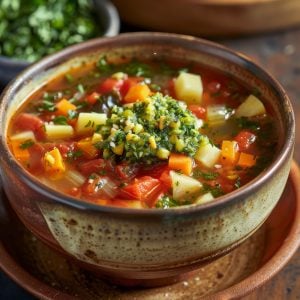
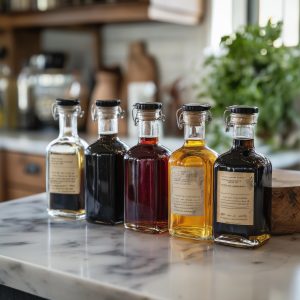
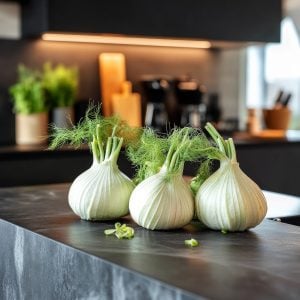
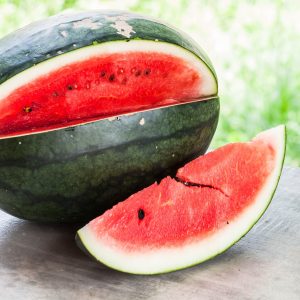

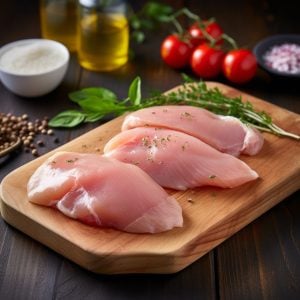
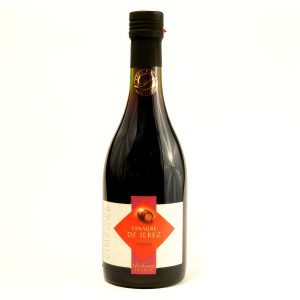


18 Responses
Great article! My son caught a fish today…I called it a flounder, my Dad said it was a fluke! I love your play with words, and appreciate you making this an easy to read and informative blog….now i gotta go read about what size is legal to keep! TY TY TY!
I grew up on the Great South Bay of Long Island NY. As I little girl I was well versed in “flounder” fishing, and then once on a bay trip with my dad I caught a big’un. As soon as I landed the fish my dad exclaimed “well, you caught a fluke!”. From that moment on, it was my understanding that a fluke is usually a much larger and heavier fish than a flounder.
Also, when we cooked it, it tasted different to me than flounder. I really didn’t like the taste. Perhaps it’s something one gets used to?!
I agree on what is Fluke or Flounder. I was in Navy stationed in NJ and fished a lot salt water even made our own Fluke or Flounder rigs, I like most newcomers to the fish was told the only difference was what side the eye was facing, But knowing how Jersey people love to joke I didn’t take it too serious, I did notice that Fluke was much larger and caught mostly at a different times and in deeper water.
After catching both I could not swear I would know the difference,, and didn’t care as they both taste the same,, GOOd!
If it’s got vicious looking teeth it’s a fluke, if it has a soft toothless mouth it’s a flounder. Fluke are the tastier of the two.
Making your recipe tonight for 15!!
You will have to work in batches or use multiple fry pans. Have a great meal.
This is all crap. On such fish called a fluke, only by slang.
Look it up in a dictionary.
Get the facts before you write something.
This is why people get in trouble fishing for flounder. There are winter and summer flounder. Along with sole another totally differant fish. Read the laws in your state before going fishing . But don’t depend on this screw up. So many believe crap like this.
SO START IN THE DICTIONARY. Then move to the discription of flounder. Because there is no such thing as a fluke other then by Slang
Ric, I appreciate your enthusiasm but but if you look up “fluke” in the Merriam-Webster dictionary, it describes “fluke” as a flatfish which is exactly how I described it. I also say in big, bold letters, All Fluke Are Flounders and I also say “Flukes are also called “summer flounder,” ” so I’m sure I agree with you.
You need to do more research before going ballistic, lol, I was stationed in Jersey and fished for both and made the Fluke rigs and Flounder Rigs, And have caught both,
There is a difference but in fairness they are both same species of family.
Fluke do get much larger, and if you check the eyes are set different , Now we get to west coast Halibut and there I am stumped,, lol
Wonderful article. Thank you so much for taking the time to write this. I learn something every day. Gracias
This was wonderful. I was raised in Long island NY and my grandfather and I went to scotty’s dock and would catch fluke and flounder. He was written up in magazines in the 70’s as the Flouner Kind of Long Island Andrew Barbaccia. Thank you for they wonderful story of great fish!
Same! Used to catch these like crazy in the sound until they kept jacking up the size of keepers now it’s nothing but porgies! Our pops might have know each other as my dad was the ” Duke of Fluke”!!! Until I came along….winked 😉
I agree that many types of fish arte called different names depending on area they are in,, Like Florida call Bream and up North its a Blue Gill, A speck is a Crappie, and there jack Pike is a Grass Pike some place else, But I have been all over the east coast and in Many countries and Fluke and Flounder are two different fish not species, So don’t think there is any Fluke in the identity,, Pun Intended..lol
My recollection is fluke have bigger mouths and bigger hooks are used.
Fluke,summer flounder face left by that I mean with the mouth on the bottom and the Eyes On Top holding the fish up it’s facing left. Also it has teeth. Winter flounder face right Eyes On Top mouth on bottom and they are as toothless as your great-grandmother. All I can speak about is the Jersey Shore and summer flounder are usually always called fluke. As far as taste I personally do not see much of a difference they are both excellent fish. Well I hope I did’t confuse anyone so take care. T
You are the first to mention sole.
This is very simple a flounder is like all other fish with eyes on both sides of its body while a fluke has its eyes on one side of its body that’s why it’s referred to as a fluke. It’s all in the location of the eyes on the body. Get it. Lol
Hi, I was googling around for the content about the seafood. On this page, I found your fantastic resource. Just wanted to let you know how much your page has helped me. We provide fresh fish, blue crab, crab cake, alaskan crab legs, shrimp, shellfish, seafood soup, and more. Thanks for compiling your resource list and have a great day! – Divya